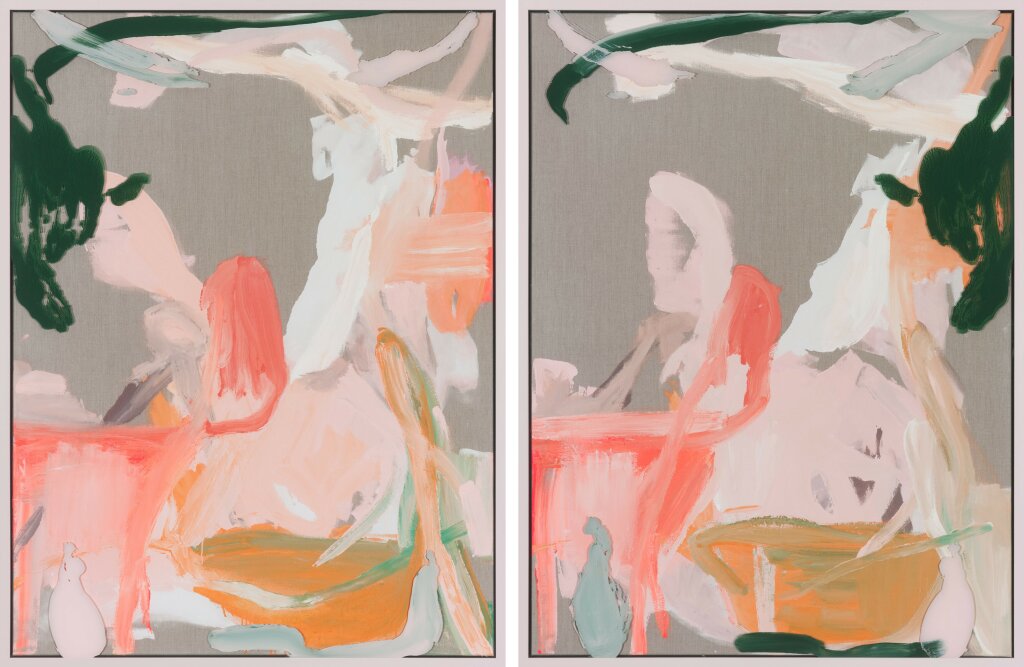In the series Verschränkte Werke [Entangled Works], Michael Müller uses the analogy of entangled particles to describe the relationship between two sides of a diptych painted on blank or printed canvas, aluminum dibond, and on glass. Elements applied to one painting during the painting process simultaneously informed the painting process of the other painting, on which the elements recur—sometimes in the same form, sometimes altered, alienated, in a different place, mirrored, in a different color, or only fragmentarily. In Schleifensprung [Loop Jump] (2020), for example, the gestural color applications of the canvas and glass pane of one painting are each found in different proportions, overlays, and hues on the other, which are thus intertwined. At the same time, there is not only a work-immanent entanglement, but the individual works of the series also correspond with each other, in that pictorial compositions and fragments recur in different works across the series: Thus, the brushstrokes from FORMA FANTASMA reappear as a print on aluminum dibond in Fucking Prain (Miss Spelling) and Mademoiselle Coco at the Ritz (Nazibraut / Abwehr-Agentin F-7124) [Mademoiselle Coco at the Ritz (Nazi Bride / Counterintelligence Agent F-7124)] (all 2021), and in this way the works reveal that they were not created ex nihilo, but rather find their origin in other paintings and they relate to other paintings without this being apparent at first glance or when viewing only one work in the series.
Drawing on the quantum mechanical notion of the ‘freedom-of-choice’ loophole, Müller argues that the degree of autonomy in abstract painting is overestimated. The ‘freedom-of-choice’ loophole is an attempt to reconcile quantum entanglement with classical physics, and assumes that the quantum objects being measured and the measuring equipment can be influenced by unknown factors prior to the experiment that is supposed to detect entanglement, thus explaining the measurement results without the “spooky action at a distance,” as Albert Einstein called entanglement. Müller shows in the series Entangled Works that there are countless—at least for the viewer—unknown influences, limitations and preconditions that subtly limit and influence an artist’s choices—not to mention the physical laws of gravity and their effects on painting, which are beyond the painter’s control and influence the behavior of the colors on the support material, which in turn must be reacted to in the painting process.













